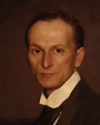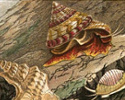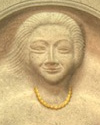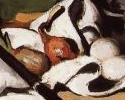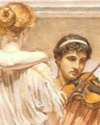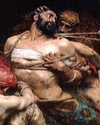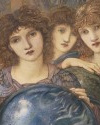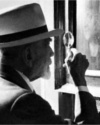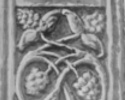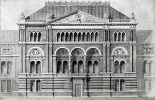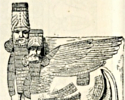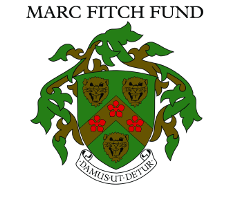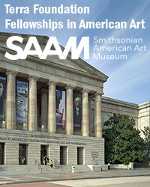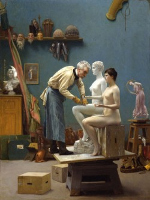X
Please wait for the PDF.
The browser will either open the file, download it, or display a dialog.
The browser will either open the file, download it, or display a dialog.
This article explores the increasingly central critical concept of the English, and later British, "School" in art, ca. 1880–1910. After briefly surveying the work of several professional critics writing in the press, it then focuses on Marion H. Spielmann's prolific writings across varied venues—journalism, his editorship of The Magazine of Art, a monumental scholarly study of Victorian "New Sculpture," the catalog of British art at the 1908 Franco-British Exhibition, and multiple entries for the 1911 Encyclopedia Britannica. The essay analyzes his conservative yet populist views of Victorian art through lenses of emerging late-century notions of Britishness, competing national cultural identities, and conflicted views about modernity in art.
This essay returns to the seminal accounts of late-Victorian sculpture provided by Philip Henry Gosse. It seeks to suggest that an interdisciplinary, Janus-faced methodology, one that looks both forward to Modernism and backward to the mid-Victorian period, and out from art history to the Victorian cultures of literature and science/faith, are likely to prove the most historiographically productive way to continue rehabilitating Victorian sculpture.
Returning to writings about sculpture at the turn of the 20th century, this essay asserts that sculpture is a particularly effective medium through which to reaffirm the very real bonds that connected artistic practices in the decades on either side of 1900. It explores the ways in which the critical vocabulary developed for sculpture in the late 19th century prepared the way for the reception of sculptural experiments of the early 20th century, arguing for a more flexible narrative for sculpture, which can accommodate both objects and critical writings from before and after 1900.
Roger Fry gained prominence in the early twentieth century with his advocacy of the Post-Impressionist artists and the “form” with which their work is imbued. It is important to recognize, however, that his writings from the late nineteenth century largely address the same aesthetic questions, albeit using different language. This article argues that the common element throughout Fry’s critical writings, from the 1890s to the 1930s, is their emphasis on understanding the nature of aesthetic perception.
The writings of William Cosmo Monkhouse, popular and prolific art critic, reveal the disparate forces confronting and disrupting late Victorian art criticism. As it considers Monkhouse's evolving point of view, this essay discusses how one apparently conservative critic engaged, tentatively embraced, and ultimately helped to shape the emerging language of modernism.
Art critics in the years before and after 1900 frequently discussed British history painting using terminology associated with drama and decoration. This article explores these themes in contemporary criticism of history paintings by Edwin Austin Abbey, Frank Dicksee, Edward Poynter, Solomon J. Solomon, and J. W. Waterhouse, among others.
This article reconstructs Pre-Raphaelite artist Edward Burne-Jones’s little-known reputation as one of the “great religious painters of the world” through previously unexamined texts by artists, clergy, critics, and novelists appearing in books and periodicals, both Christian and secular in nature, between the late 1880s and early 1900s. Furthermore, it analyzes how audiences used and interpreted his images for sacred purposes. Examining this body of art writing restores a missing chapter of Burne-Jones’s reception history, dismantles art historians’ assumption of nineteenth-century Britain as a time of endemic doubt and lost faith, and reveals unexpected continuities between “Victorian” and “modern,” as well as the subjectivity of “sacred” and “secular,” in the years before and after 1900.
Enshrined in a Library Edition, and an Incubus to Get Rid of: Walter Pater’s Renaissance around 1910
This essay addresses the reception of Walter Pater’s Studies in the History of the Renaissance (1873) in the first decades of the twentieth century in the writings of Bernard Berenson, Roger Fry, and T.S. Eliot. Pater’s acute sense of visual form in many ways points towards modernist art criticism, yet by 1910, when the Library Edition of Pater’s works was published, the author had obtained the status of a vampiric figure, ruling from the grave, against whom Fry, Berenson, and Eliot felt the need to react, each in different ways.
This article examines the scholarship of the scholar and artist W. G. Collingwood, perhaps best remembered for his monograph on Anglo-Saxon sculpture (1927). It traces his evolution from the time his Philosophy of Art was published (in 1883), when he entered the inner circle of Ruskin’s collaborators and began exhibiting at the Royal Academy, while at the same time embarking on a career as an archaeologist. This essay shows that the attitudes and views revealed in his art and articulated in his art-historical and critical works over the next twenty years remained largely unchanged until the early years of the twentieth century (1907) when he began depicting, commenting, and publishing on early medieval sculpture in largely diagrammatic and formalist terms. While this scholarship marked an apparently significant departure from his work up to that point, and from the approaches that were emerging at the time among other Anglo-Saxon art-historical scholars, it nevertheless reflects a continuity in his work as an archaeologist.
In the nineteenth century, one of the few institutional settings in which art history could be pursued was in museums. This essay examines the development of art-historical scholarship at the South Kensington Museum (renamed in 1899 the Victoria and Albert Museum [V&A]) in the decades around 1900. It explores the establishment of an empirical, object-based approach, which became a V&A tradition, by curators A. B. Skinner, C. W. Wylde, H. P. Mitchell, A. F. Kendrick, and two more senior curators who adjusted to the new ethos, A. F. Strange and W. W. Watts.
This study explores the British origins of a newly accessible art history through the lens of a little-known publication: Nancy Bell’s Elementary History of Art, an illustrated general survey issued in six trans-Atlantic editions between 1874 and 1906. Though Bell’s contributions as an author and educator of art history have been effectively erased by historiographers focused on developments within the academy, Bell’s book uniquely embodies a number of key aspects of the history of art as a developing field, including its text-image hybridity, its national and international profiles, its overlapping scholarly and popular spheres, and its methodological shifts between historical cataloguing and critical aesthetics.



